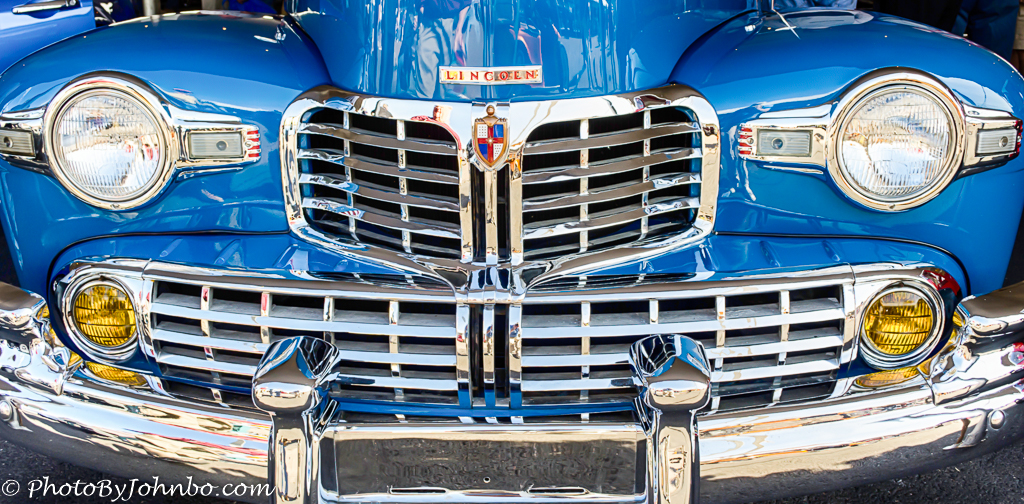
This week, Patti Moed asks us to consider the shapes and designs in our lives. She writes, “This week we invite you to share images that feature shapes and designs. Have fun searching for them in nature, in your home, in architecture, in food, in textiles, on the street–and just about everywhere else.” You can read her entire challenge post here.
Regular readers know of my love for classic cars and that I bemoan the fact that in the pursuit of efficiency and aerodynamics, vehicles have become boring, and if it weren’t for a manufacturer’s nameplate, one would be quite indistinguishable from another. For my response, I feature unique and classic designs of automobiles from eras gone by.
You won’t have a problem with undistinguished designs in this challenge response. For example, my opening photo is of a 1940’s era Lincoln Zephyr. That grill design is unmistakable. One can argue that vehicles are much more efficient, are far better designed from a safety standpoint, and are made of materials that are more easily recyclable. Of course, these things are good, but something has clearly been lost in the process, the art of the design.
Some designs are so classic that other products have been designed that celebrate the uniqueness of the design characteristic. Such is the case of the 1959 Cadillac. That model took the tail fin over-the-top to the point of ridiculousness. Yet a fan of that feature might just like to own this couch created to emulate that vehicle’s classic fins.
Some designs have changed the vernacular. Early model automobiles like this 1929 Hudson often had a short flat deck in the rear, just the place to put your trunk when traveling. To this day, in the United States, that storage area in the rear of sedans and coupes is still called a trunk.
In the 1930s to 1950s, the large, heavy luxury cars like the Lincoln in the opening photo and this 1950’s era Cadillac sported lots of chrome and a large grill area. By 1959, Cadillac put the design into those large, long trunks with the big tail fins and put much less emphasis on the grill. This example, probably a 1951 or 1952 had little “bumps” where the tail lights stood up higher than the trunk, the beginnings of the growth of those giant fins.
As an aside, this is one of my favorite black-and-white images. The car was under an open tent and the sun’s light was cut off from all but the very front of the vehicle leaving an interesting shadow design emphasizing that massive grill.
People who customize and restore automobiles often build a trailer that mimics the design of their vehicle. I always enjoy looking at the workmanship of these beautiful accessories.
So far, this post has featured Ford and General Motors products popular in the golden age of automobiles. Another player was Chrysler Motors with several lines of luxury and pedestrian vehicles. In the 1950’s tail fin era, this DeSoto Adventurer featured a tail fin that in my opinion, fit well with the rest of the vehicle’s design.
Probably one of the most recognized “family car” designs was the 1950s Chevrolets. Its classic lines are immediately recognizable to anyone who grew up in that era. Arguably the most popular was the 1957 model Bel Air, though I believe this example to be from an earlier year.
In automobile designs, there are always winners and losers. For my last two images, here’s one of each. Probably the most well-known design loser was from Ford Motor Company. Henry Ford named the car after his son. I’m sure it must have been a disappointment for his son when the car, the Edsel, was a marketing failure.
Finally, a winning design in a classic luxury car is unmistakable. That massive Rolls Royce Grill is instantly recognizable, and the epitome of wealth and status for those who have the wherewithal to own one.
Thanks to Patti for allowing me to indulge in such a limited scope for her photo challenge, titled Shapes and Designs.
John Steiner

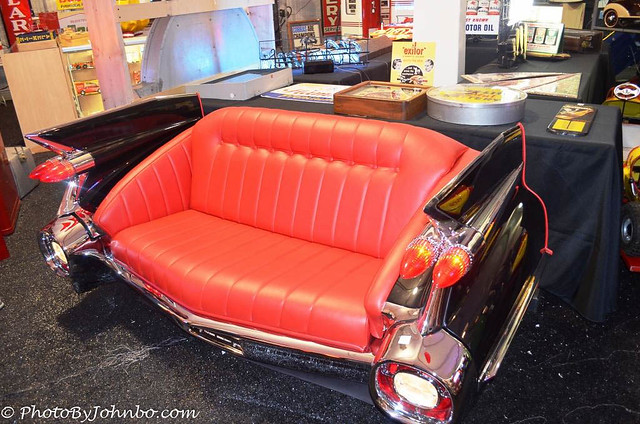


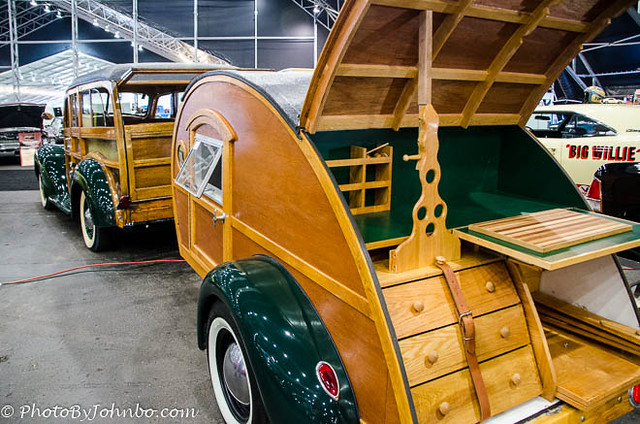
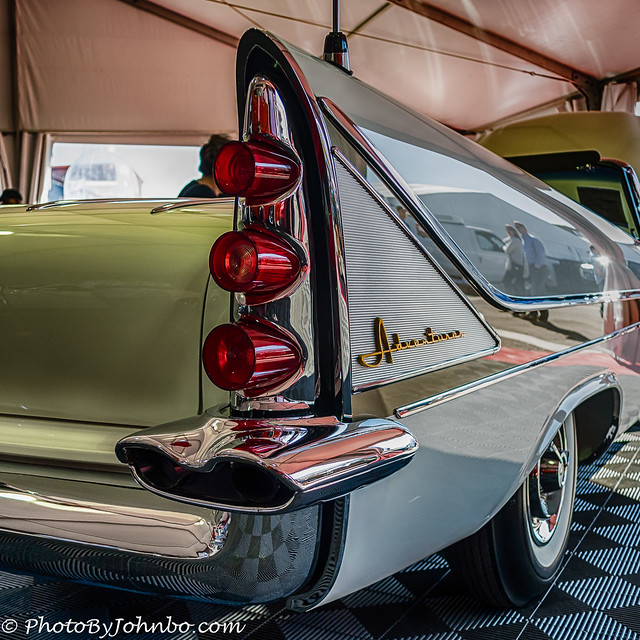
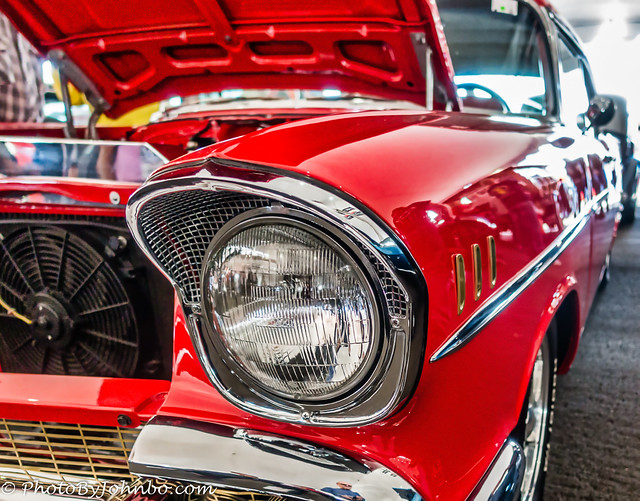
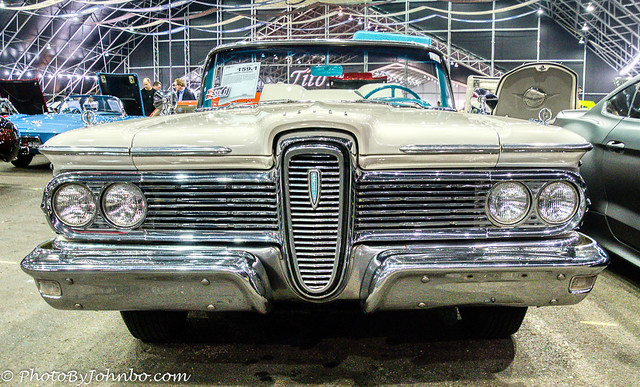

I love the way you filled the frame with details and not the whole car – so much more impactful. Nice contribution.
Thank you! I have always enjoyed focusing my lens on those interesting and unique details in classic cars when I have the chance to get up close to them.
WOWWWWWWWW. Excellent John. I’ve probably mentioned we had a ’57 Dodge Custom Royal when I was a kid. I think it had the push-button transmission. I love that woody and trailer you show too. What a beauty.
I had a 1957 Dodge station wagon in the late 1960’s until I wrecked it. The transmission was push button as well. I don’t remember the model.
Somehow classic US cars have an appeal that I personally don’t find in our UK models. The tail fins set them apart, and I love the ones on that Dodge Adventurer! That wooden trailer is a work of art 🙂
I am a fan of the British sports cars, and owned an MGB for a decade or so. Other than the different brands of roadsters, and the ultra luxury cars, I don’t know much about British cars.
That trailer is truly a work of art, and surely it was a labor of love.
Ah yes, our sports cars can be stylish as can the luxury end of the market. But our family cars have never had the panache of the 1950s and 60s US ones!
That couch is … unique!
Good term for the couch. It would probably look good in a man cave somewhere. 🙂
I absolutely love the angles you grabbed in all these photos. Cars have always been a bit of an art, haven’t they? You captured this history so eloquently and with unique perspective to the prompt. I think I love the way the trailers were designed to go with the vehicles. Nowadays, I think we get the “Jeep” to match the RVs. lol.
Like you my husband loves cars. He can tell the newer models by a grill change, or a headlight change etc… and knows model years of the coolest cars. I enjoyed this John. Donna
Thank you much. This is a fun challenge for me given the subject is of great interest to me.
Yes. Clearly. Very nice.
Oh I’m so loving these beauties 😀 😀 Fabulous entry for Lens-Artist 😀
Thank you! I try not to miss an opportunity to capture classic automobiles.
Actually, I think it’s a DeSoto Adventurer and not a Dodge. Same parent company, though.
I think you are correct!
Great cars John. Love the woodies. 🙂
They are, indeed!
Wazoo John – fabulous post! Clearly your heart was in this one. Loved all of them but oh my gosh that Rolls, an absolute dream! And I thought the Cadillac was painted two tone. Excellent catch
Thank you! Those beautiful cars are all special in their own way.
Can’t argue with you about the Rolls-Royce.
Wonderful captures of all these fantastic classic cars!
Thanks. I always enjoy photographing unique features of classic cars.
You know how to capture the elegant designs of the classics.
Thank you for the nice compliment.
That couch! Unbelievable design! I know one of my friends who has a classic car would love it! It’s a true art to photograph these classic cars in a way that really highlights their design and beauty. (I know. I struggle with it. 😀) You’ve mastered it, John. I admire that!
Thank you! I really like to focus on the features that make a model unique.
Nice photos John! Don’t see many of those early Lincolns or Adventurers that’s for sure.
Indeed, they are hard to find these days.
I also like to take pictures of classic cars when I see them. Often the main difficulty is to have enough distance to have a good view of the lines, and often the cars are too close to each other in exhibitions. Of course taking details is fine but the overall shape is missing. Your cars are gorgeous!
I learned to shoot details when going to Barrett-Jackson’s auctions. They always put the cars too close together.
When I can’t get the entire car, I try to focus on those iconic details that instantly identify the vehicle (or at least that’s my hope.)
Great photos of these classics. It’s been a while since I’ve been to the auto museum. Now I have to go back!
The red Chevy it is a 57 model. Awesome post.
Thanks. That’s what I thought originally, but when I look down the beltline, I don’t see that higher fin clearly. It looks more rounded to me like the earlier years. What clues you in that it is a 57?
Here is the catch, not all 57 are “Bel-Air” There are “lesser” models that came without the tail fins. Models like the “150” and “210”.
Ahhh! Thanks for that!
Back then, the American car was a symbol of power, style, and reliability but how things have changed, today the customers have shifted so dramatically to the Japanese/European brands that the “Big Three” just quit producing cars in North America. Just the “icons” remained (Mustang, Challenger, Camaro, Corvette).
Part of that switch came about at the hands of the American car company CEOs and their commitment to years of “planned obsolence” in design.